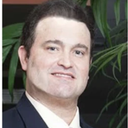I had my lasik done in February. And I'm planning to undergo rhinoplasty in May. Will the procedure or the black eye that might follow, has any potential to affect my vision?
Answers (6)
From board-certified doctors and trusted medical professionals
More Rhinoplasty Questions
See all Rhinoplasty Q&AWE SEND PRETTY
EMAILS
What’s trending? Who’s turning heads? Which TikTok myths need busting? We’ve got you. No fluff, no gatekeeping—just real talk. Get our free, unfiltered newsletter.



